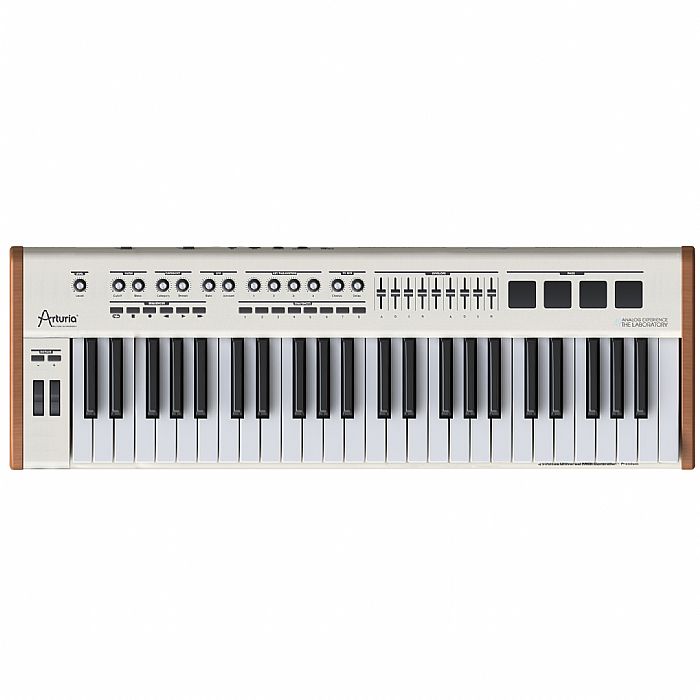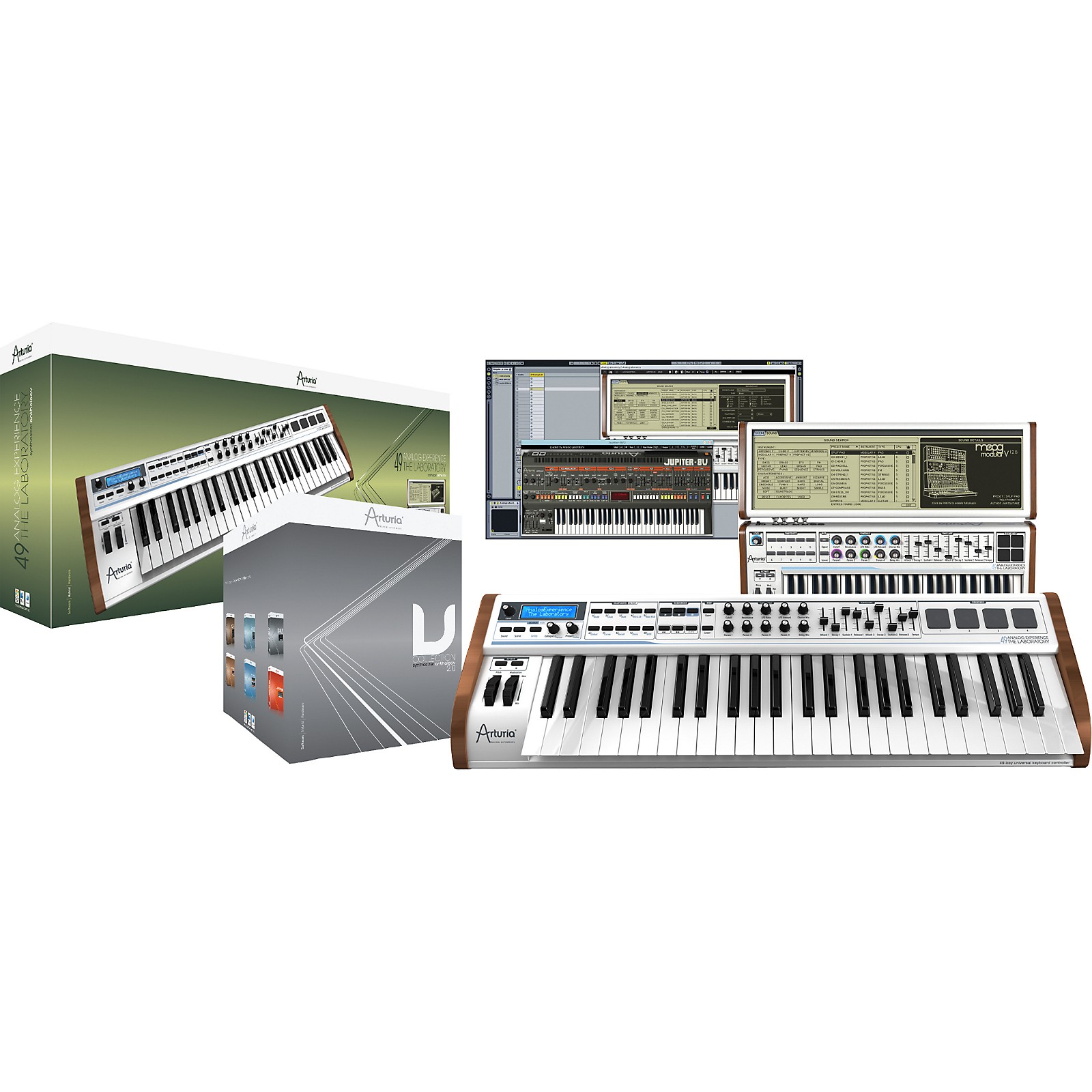
In addition to these, there are six buttons that send MMC messages (Start, Stop, Record, Backward, Forward and Loop) for transport control of hardware and software sequencers. This is not just wider than the keyboards supplied with the Player and the Factory it offers a greater range of facilities and more in the way of physical controls, with nine sliders (two ADSRs and Tempo), 13 knobs, 23 buttons (including 10 snapshot buttons that allow you to recall favourite patches from the keyboard) and four pads, as well as traditional pitch‑bend and modulation wheels. Let's start with the 49‑note velocity‑ and aftertouch‑sensitive keyboard. Like its siblings, the Laboratory combines three elements: a keyboard controller, a large library of editable sounds based on the company's existing V-series soft synths, and a separate software package that allows users to configure the keyboard for use with other software. My review of the curent two products in the series - the Player and the Factory (see Sound On Sound January 2011) - suggested that they provide an interesting set of facilities in a novel fashion at an attractive price, but what of the Laboratory? Could there be room above the Factory for a bigger and better 'Experience', or were Arturia attempting to slice the virtual analogue soft synth market just a little too thinly? (As we were going to press, Arturia announced a 61‑note version of the Laboratory, but this review will concentrate on the 49‑note model.) Physically Speaking

When I first read about the flagship of Arturia's Analogue Experience ('AE') series, I wondered whether there would be any demand for another product based on the company's existing analogue modelling technology.

The latest addition to Arturia's Analog Experience series takes their hybrid software/hardware synth concept even further.


 0 kommentar(er)
0 kommentar(er)
